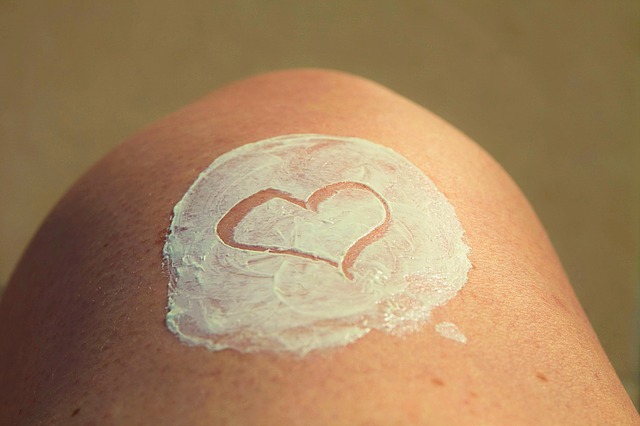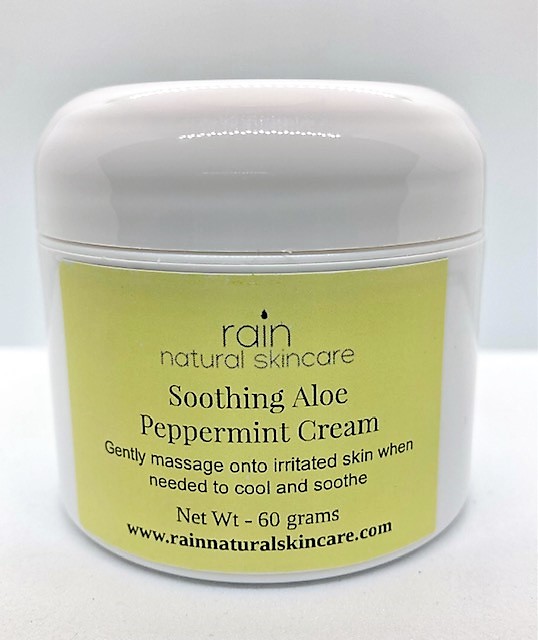When the weather finally starts to warm up, all we want to think about is getting out and enjoying the sun! Summertime is a great chance to get a natural healthy dose of Vitamin D. But whatever you’re doing outside, be careful that you don’t let that fun cause sun damage to your skin.
Oh the sun, it can be our best friend or it can be our worst enemy, and ultimately it all comes down to how we treat it and how we take care of ourselves while out in it.

I find there’s so much conflicting information out there about sun safety. And as usual, there are two sides to everything…such as some sunscreen companies recommend the constant application of high SPF-containing chemically based sunscreens every time you go out in the sun.
Then there are the holistic experts that say NO–the overuse of sunscreens is what causes Vitamin D deficiency in many people of all ages. They say it’s necessary to spend some time in the sun without sun protection to convert the sun’s rays into vitamin D. They also believe that the chemicals in sunscreen are toxic and might actually contribute to skin cancer, rather than prevent it.
So who should we believe? There are so many different opinions on what’s correct in terms of sun safety, but I must say that I agree with the holistic experts that our body needs to convert the sun’s rays into Vitamin D, but we need to do it sensibly and safely.
Do you wonder about what type of sunscreen to use, should we even use it, and if so, when and how to use it? I’ve made a list of 10 simple sun safety tips that I’d like to share to help you out:
10 Sun Safety Tips
1. We all need small amounts of sun exposure on a daily basis. Vitamin D deficiency is very common, affecting approximately 41% of people of all ages. That’s why it’s necessary to spend some time in the sun without sun protection to convert the sun’s rays into vitamin D. Depending on your skin type, 10-30 minutes with the sun on your face, arms, and legs several times a week can allow your skin to provide enough UVB to meet vitamin D needs. Go for a walk outside, let the kids play outside, do some gardening, sit out and enjoy a book and glass of water, it’s important for so many reasons. Just make sure to keep babies out of direct sunlight.
2. If you’re going to be outside at any time of year in the sun for longer than 30 minutes, wear some form of sun protection. This includes protective clothing, wide-brimmed hats, sunglasses, and applying natural sunscreen products on exposed skin.
3. If you choose to use a sunscreen product, use a natural cream or lotion with zinc oxide or (non-nano) titanium dioxide as the active ingredient, and ones that contain as few inactive ingredients as possible. Avoid sprays as they can be inhaled, especially by children.
Here’s a list of the “NO WAY” ingredients to stay away from:
- Oxybenzone (the worst of the chemical sunscreen active ingredients)
- Avobenzone (also stains clothing)
- Dioxybenzone
- Sulisobenzone
- Para amino benzoic acid (PABA)
- Padimate O
- Octyl salicyclate
- Octisalate
- Cinoxate
- Phenylbenzimidazole
- Homosalate
- Menthyl anthranilate
- Trolamine salicyclate
- Octocrylene
- Octinoxate (banned in Hawaii along with Oxybenzone)
- butyl methoxydibenzoylmethane
- octyl methoxycinnamate (OMC)
- Methoxycinnamate
4. Sun protection factor (SPF) All sunscreens have an SPF on their labels. The SPF is a relative measure of how long it will take for unprotected skin to burn in the sun compared to how long it will take if the recommended amount of sunscreen is used. Make sure to use an SPF between 30 and 50. Anything higher than that is not actually providing additional protection and is more marketing hype than anything. However, using sunscreen with SPF 30 does not mean you can spend 30 times longer in the sun because there are a number of other factors that can affect the protection level of sunscreens.
Some of these factors include:
- how active you are (e.g., how much you sweat or swim)
- how strong the UV rays are on a particular day and location
- if you’re taking certain medications or have certain health conditions
- skin type: in general, lighter skin is more sensitive to UV rays than darker skin
- how much and how often sunscreen is applied to your skin (applying less than the recommended amount of sunscreen greatly reduces the amount of protection it provides)
- Sunscreens are not meant to increase the amount of time you can spend in the sun without burning. They are meant to provide protection from UV rays while you are outside for a short period of time.

5. If you are going to be in the sun during peak sun hours, it’s important to reapply sunscreen every two hours. The middle of the day is when the sun is at its highest and when you’re more prone to getting the most sun damage. Try and limit your exposure in the middle of the day, and make sure that you’re protecting your skin if you do go out in the sun during those times as the sun’s UV rays are strongest between 11 am and 3 pm, wear protective clothing or go in the shade for part of the time to avoid sunburn.
Then make sure to shower off the sunscreen completely after you’re done with UV exposure for the day. Afterwards, apply facial and body skincare products that contain cooling and soothing ingredients such as Aloe Vera gel, witch hazel, green tea, or cucumber.
6. To get the full benefit from your sunscreen, it’s important to use the recommended amount. Most people are not using enough sunscreen. For example, an adult should use about 7 teaspoons (35mL) of sunscreen to cover all areas of exposed skin (1 teaspoon for each arm, 1 teaspoon for each leg, 1 teaspoon for your front and 1 teaspoon for your back, and 1 teaspoon for your face and neck). If you don’t use enough sunscreen you are not getting the full level of SPF protection that is listed on your sunscreen.
7. Eat a healthy, balanced, whole foods-based diet with a large variety of raw, fresh fruits and vegetables. Being out in the sun creates additional oxidative damage on top of our normal everyday exposures, so we want to get extra antioxidants during the summer months. Luckily it’s a great time of year to find organic fresh fruits and vegetables from your own gardens or farmer’s markets. Berries, kale, spinach, peas and broccoli are fantastic and high in antioxidants and an easy way to increase your antioxidant intake.
8. Stay hydrated! Dehydration weakens the skin’s immune function and decreases its resistance to the sun’s rays. During the summer, we oftentimes get dehydrated from being out in the hot sun, and we’re perspiring more, which is why it’s critical to make sure that you’re staying hydrated. Make sure you are drinking plenty of filtered water or even fresh coconut water to get some additional electrolytes. Another healthy option is drinking herbal iced teas. You’ll want to make sure to choose the ones that are more hydrating rather than a diuretic, (so no caffeine teas). I like to make vanilla rooibos tea, let it steep for 10 minutes, and then add some ice to cool it down. Make sure to increase babies’ and children’s fluids if outside in the sun.
9. Certain supplements such as collagen and antioxidants give the body additional ammunition against free radicals and sun damage and can also help remove damaged tissue and rebuild stronger, healthier tissue.
10. Protect the skin’s natural protective barrier on a regular basis by using a clean natural skincare routine. Use products containing plant-based oils, natural emollients, humectants, and antioxidants. The stronger the skin’s barrier is, the less chance there is for permanent damage to collagen, elastin, and melanin-producing cells in the deeper layers of the skin. We talked about staying hydrated on the inside by drinking lots of water and other healthy drinks, and it’s also important to keep your skin hydrated on the outside, especially when you’re exposed to the sun. If you go out in the sun and get a little too much, make sure that you use aloe on your skin afterwards and thoroughly moisturize your skin. You want to use clean, non-toxic skin care products and ingredients. Choosing ones that contain aloe can be a great way to nourish the skin and help repair the damage from that excess sun exposure.
My Soothing Aloe Peppermint Cream is a nourishing moisturizer that includes aloe as one of the primary ingredients. This can help soothe sun-parched sensitive skin and also keep it hydrated.
Don’t be afraid of the sun!
The sun is necessary for our skin. We need it for our health, to provide warmth, and it also helps with our happiness. But don’t let the sun scare you from having an amazing summer, get yourself and your kids outside to run around and play with the sun on your skin for a short period of time. But remember, too much of the sun can be very damaging, so take precautions when outside in the sun for long periods of time, but give your skin a chance to make its own Vitamin D too! Just follow these 10 tips to protect your skin, and you will have the best chance at keeping that healthy glow and helping protect against potential sun damage.
Did you get too much sun exposure, or want to be prepared for if you do?
(It’s also just great to apply after a day in the sun, regardless of whether or not you got burnt!)
Check out my Soothing Aloe Peppermint Cream for post-sun exposure!

Take care,
~Lorraine
Reference: https://www.canada.ca/en/health-canada/services/sun-safety/sunscreens.html

